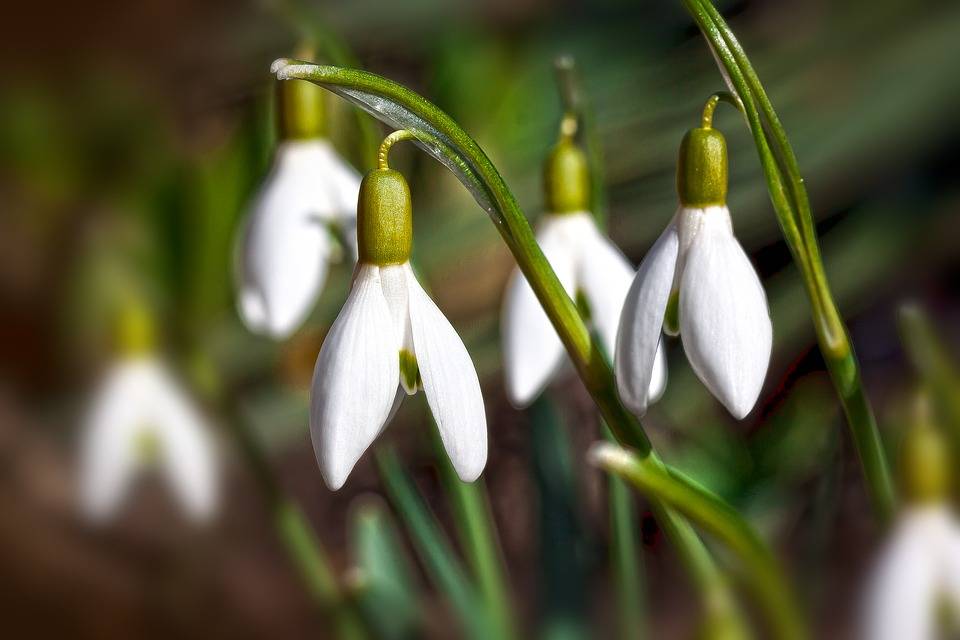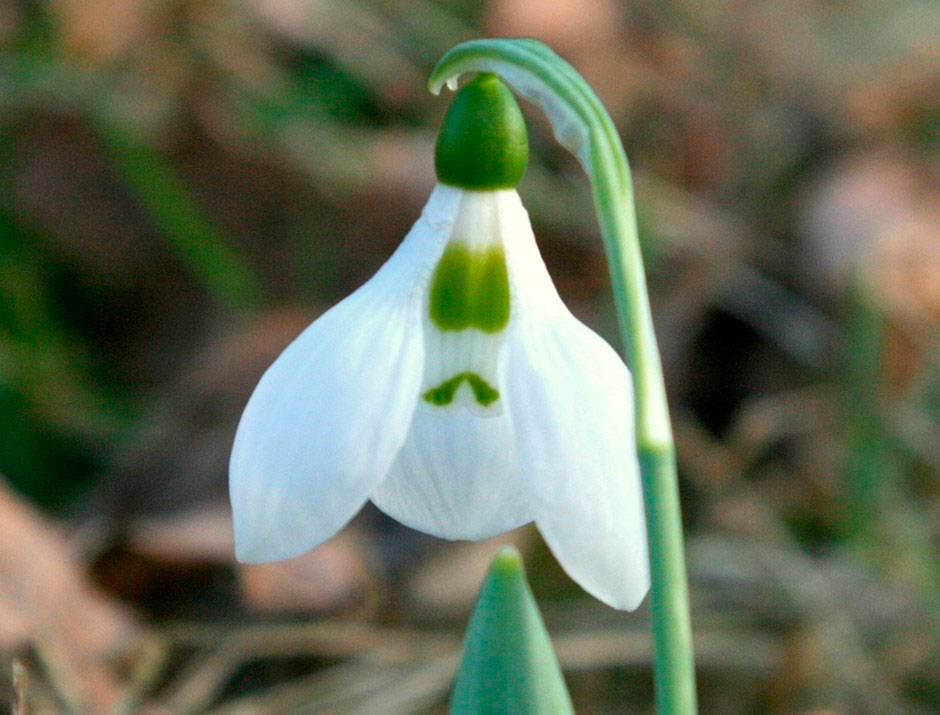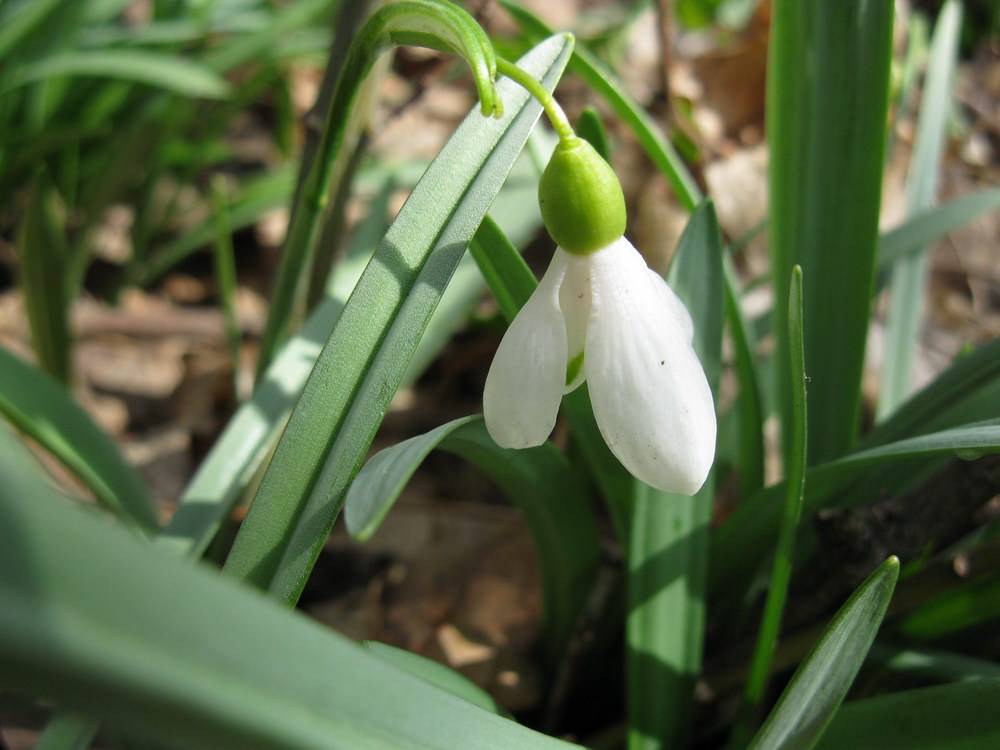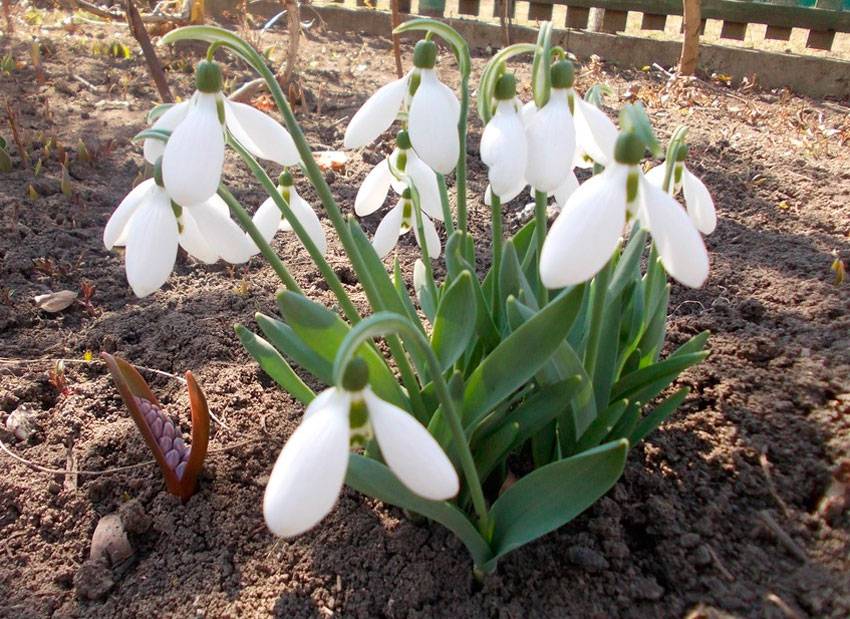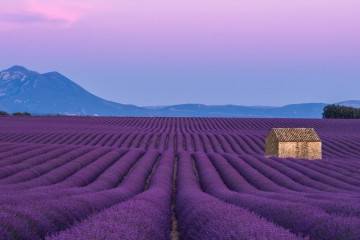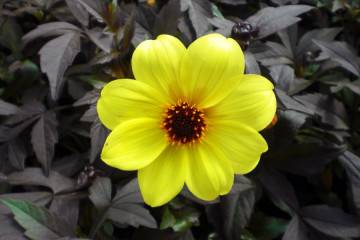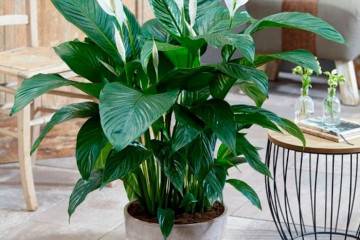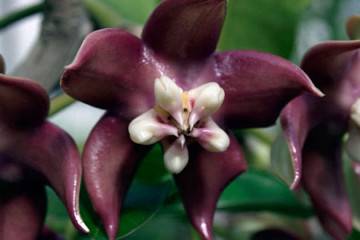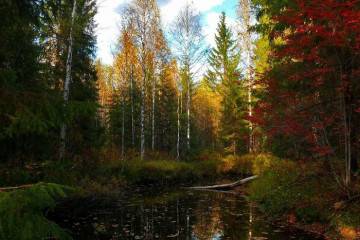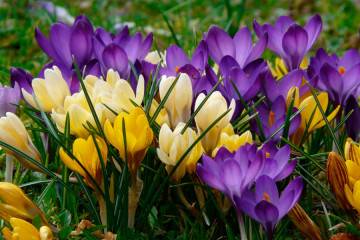What snowdrops look like - what color they are
Content:
Snowdrop, or Galanthus, is one of the first plants to emerge in early spring on thawed patches. Most of the flowers are found in the wild, so due to environmental factors, most species are threatened with extinction. All varieties of perennial, except for Snow White, are listed in the Red Book. Therefore, gardeners from different countries strive to give life to snowdrops, at least in their garden plots.
Description of the appearance of the snowdrop
Snowdrop is a flower that belongs to the genus of perennial grasses, or rather to the Amarylis family. It propagates in bulbs, the diameter of which is usually no more than 3 cm. On the bulbs, scales and buds of renewal are observed. Every year, 3 new scales appear from the leaves located below.
The leaves are elongated oblong plates. Usually there are 2 or 3. The color can be either light green with a yellowish tinge, or dark. Leaves begin to grow out of the bulbs at the same time as the buds. After flowering, the size of the leaf plates reaches 10 to 20 cm in length and 1-3 cm in width. The leaf surface is usually smooth, but may contain folds, like in some species.
The bract leaf includes two bracts fused together, which form a tube at the base with a peduncle emerging from it. The peduncle has the shape of a cylinder. The perianth consists of 6 leaves: 3 outer ones are painted in snow-white light, and 3 inner ones have a green spot at the top.
The fruit of a snowdrop is a fleshy capsule that opens along the valves. Perennial seeds are represented by balls.
History of appearance
The name of the flower comes from the Greek words, which literally mean "milk flower". The name is due to the color of the herbaceous perennial. Another variant of the name is associated with the fact that plants sprout in early spring directly from under the snow.
There is an interesting legend related to the appearance of the snowdrop. The story goes that it was snowing while Adam and Eve were expelled from paradise. Because the weather was cold, Eve froze very much, because there was absolutely nothing living around her. Then the snowflakes, falling to the ground, began to turn into white snowdrops, thereby giving Eve hope for something good.
What color are snowdrops
Mostly snowdrops are painted in white and snow-white shades.The colors of the leaf plates vary from species to species. They can be painted in light greenish, dull, rich green and dark tones.
Beneficial features
Snowdrops are not only decorative flowers, but also useful ones. They are often used as a remedy for certain diseases in traditional medicine. The reason for this is the beneficial properties of perennials, which can improve the condition of the human body.
The herb is used to treat diseases:
- bones;
- vessels;
- nerves;
- gastrointestinal tract;
- various tumors and neoplasms.
Description of species
Today, there are about 19 known species of snowdrop. They have differences in color and structure of flowers and leaves.
Alpine snowdrop
The plant has a bulb up to 2 cm in diameter. The leaves are painted in dark shades of green and, after flowering, reach up to 20 cm. Perennial growth begins 4 years after planting. The flowering period occurs in late winter - early spring. The flowers are painted in white. At the end of spring, a fruit is formed, which includes small seeds in the form of balls.
Snowdrop Bortkiewicz
The leaves have a bright, rich green color. Their length sometimes reaches 30 cm, and their width is usually about 2 cm. The outer leaves of the flower are slightly concave inward. A green border is formed around the depression.
Snowdrop Cilician
The leaf plates are painted matt green. The outer petals are elongated and elongated in the shape of an oval, and the inner ones are smaller, so they can barely look out from behind the neighboring leaves. Perennial blooms in mid-spring.
Snowdrop Caucasian
The plant has green leaves that are glossy. In length, they can stretch up to 25 cm. Flowering begins at the end of March and lasts about 2 weeks. The species began to be called so because of its habitat, which is concentrated in the Central Transcaucasia.
Snowdrop Folded
The peculiarity of the type of snowdrops is the large size of the flower. The leaves have a slightly bluish tint, which disappears after flowering ends. The diameter of the blossoming flower reaches 4 cm. The bud opens in March for about 20 days.
Snowdrop broadleaf
The species is characterized by a large bulb and tall leaves. The flower is shaped like a bell. The inner petals are rounded, while the outer ones are more elongated. Flowering occurs in late spring and lasts 3 weeks.
Snowdrop Ikarian
The best soil for such a snowdrop is the rocky soil inherent in the islands of Greece. The leaves have a pale green tint and grow no more than 20 cm. The perennial blooms most often in April.
Snowdrop Elvis
The type of herbaceous plant has large spherical flowers. There are green spots on the inner petals. The flower blooms at the end of winter for a month.
Byzantine snowdrop
The variety is popular on the Asian coast of the Bosphorus. Snowdrop belongs to the species "Folded snowdrop". It begins to bloom in the fall, when a white flower with long petals appears.
Snowdrop Snow White
The most common type of perennial in Russia. The green leaves grow up to 10 cm, and the flowers have a diameter of 3 cm. The outer petals are significantly elongated compared to the inner ones. The usual forest snowdrop blooms earlier than anyone else, and fades in about a month.
The varieties most popular with gardeners
Galanthus can grow not only in the wild.Gardeners have long learned how to grow and propagate perennials in their garden beds.
Arno
The plant has wide short outer petals. Such snowdrops are usually grown in gardens and city parks.
Lutescens
A distinctive feature of the valuable species among gardeners is the presence of shiny yellowish spots on the petals of the flower. The flowers are painted in pale white tones.
Charlocks
The peduncle has a long wing. The variety is distinguished by the size of the flower, which are considered quite small.
Features of caring for snowdrops in the garden
In order to grow beautiful garden snowdrops on your site, it is recommended to follow simple rules for planting and caring for plants. Particular attention should be paid to the place where the flower will be planted. The allocated flower bed must be protected from the wind.
Watering
Galanthus does not need to be watered. An exception may be cases when the winter was snowless. The soil is already saturated with moisture, so excess liquid will only be harmful.
Spraying
Spraying Galanthus leaves is necessary only if the spring is not accompanied by rains.
Humidity
The soil for snowdrops should be moist, but water should not be allowed to stagnate. The moisture level must be maintained to prevent rotting of the bulbs.
Priming
When choosing a place for a perennial, it is worth giving preference to soils rich in humus. The soil must be loose. It is important to ensure drainage so that excess moisture does not stagnate and prevent the bulbs from rotting.
Top dressing
It is recommended to use mineral fertilizers with a low nitrogen content as fertilizers.
Features of care after flowering
After the grass has faded, the foliage will need to be trimmed. To do this, you need to wait until it dies out, so as not to disrupt the process of bulb recovery.
When and how it blooms
The blooming time of Galanthus buds varies depending on the type of perennial. Some begin to bloom already at the end of winter, while others - only by mid-end of spring.
Types of flowers
The flowers are composed of two rows of petals. The outer leaves are usually more elongated and snow-white in color. The inner petals are distinguished by the presence of a green spot.
Flower shapes
The flower shape can be presented as a bell, ball or oval. You can often find snowdrops with an inverse ovoid shape.
Flowering period
The flowering time of snowdrops depends on the type of plant. Most of the species bloom in the spring. If the winter was mild and warm, then there is a high probability of meeting a perennial at the end of February.
Bulb propagation
One of the main types of Galanthus breeding is the bulbous method. Landing takes place from July to November. The material can be easily purchased at a flower shop. It is best to choose bulbs that do not show seedlings.
Before planting, you need to take care of the integrity of the planting material. It should be free from visual defects, cracks and bruises. It is necessary to have time to transplant the bulbs extracted from the ground within 18 hours. Otherwise, they will quickly dry up and die.
Seed planting
The method of planting snowdrop seeds is rarely used, since other methods are much easier to do. The disadvantages of this method include the fact that the first flowers appear only after about 5 years after sowing.
Usually, the seeds are bought in the store or harvested from the snowdrops themselves. But the chances of sprouts sprouting are much lower than when planting bulbs.
Soil preparation
Before planting, the soil must be thoroughly loosened and equipped with drainage. It is worth remembering that clay areas are not suitable for galanthus, because moisture will stagnate on them.
Landing in open ground
Galanthus seeds are planted in open ground to a depth of about 3-4 cm.
Terms of development and life of the plant
The plant will develop within 4-5 years, and after the lapse of time, the first beautiful flowers can be observed. Since the snowdrop belongs to perennials, it will bloom not for 1 year, but for about 5 years.
Division of nests
The simplest breeding method is the division of bulb nests. For implementation, you need to dig out an overgrown bush immediately after flowering. The leaves should still be fresh. The ground is usually simply shaken off and the nest of bulbs is shared. Bulbs are planted in the loosened soil and watered with copious amounts of water. This method allows you to see snowdrops in your garden in a year.
Possible problems in growing snowdrops
Compliance with all the rules of planting and care does not guarantee that the flowers will grow beautiful and healthy. Plant-specific pests and diseases can hinder growth.
Diseases
Real snowdrops can carry diseases such as rust, chlorosis, or gray mold. They usually affect the appearance of the plant, so if the gardener notices defects in the flowers, then he immediately checks his suspicions for possible diseases. On the modern market, you can find a large number of tools that can resist such diseases.
Pests
Caterpillars, nematodes, moles, mice and slugs are considered dangerous pests for Galanthus. Rodents tend to gnaw on the bulbs and thereby slow down the growth process or even destroy the plant. To combat parasites, it is worth treating the perennial with drugs available at any flower shop.
Snowdrops are the very first spring flowers. They can grow both in their natural environment, for example, in the forest, and in the garden. At the same time, it is important to provide them with the necessary conditions and care, and then they will delight everyone with their snow-white beauty for several years.
